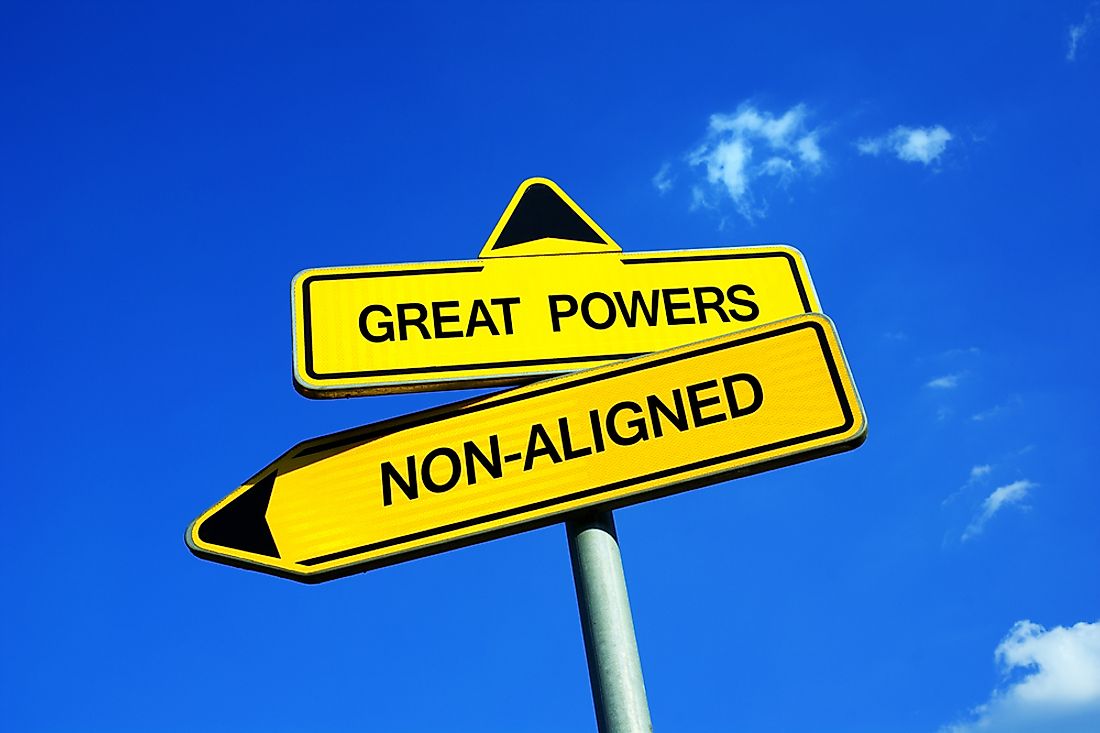What is the Non-Aligned Movement?

5. Founding
The Non-Aligned Movement, or NAM, was founded in 1961 in Belgrade, Serbia. The movement came at the height of The Cold War and many of the countries had recently shed colonial ties. Most of the 25 nations who joined in the early formation were countries that did not want to be a part of the conflict as an independent nation. Many argued at the first summit that, "The existing military blocs...necessarily provoke periodical aggravations of international relations". The Non-Aligned movement was seeking to promote "sovereign equality, political and economic self-determination, justice and freedom", for all nations who did not want to play as pawns in a larger imperial game. The main founding countries of the movement are considered to be Egypt, India, Indonesia, Ghana, and Yugoslavia.
4. Membership
In order to be granted membership into the Non-Aligned Movement, countries must demonstrate how they have obeyed 10 "Bandung Principles" which are a set of principles that were created during the years leading up to the creation of the NAM. Additionally, member countries may not participate in military agreements with the United States of America or the Soviet Union. These principles include respect for territorial boundaries, recognition of independence, and promotion of mutual interests and cooperation. Membership started with 25 countries and has now ballooned to 120 member countries.
3. Structure
The Non-Aligned Movement, true to its original purposes, does not conform to a traditional leadership or organizational structure. The current 'leader' or chair of the Non-Aligned Movement is Venezuela, taking over from Iran who held the position from 2012 until 2016. Summits are held every 3 to 4 years, which is where the leadership or chairmanship is passed on to a new country. All member countries have equal standing within the Non-Alignment Movement, unlike the United Nations, where some countries have more power and weight behind their votes or decisions on certain policies.
2. Objectives
There are several key principles and objectives of the organization which includes respecting the Charter of the United Nations and the Bandung Principles. The Non-Aligned Movement is also active in nuclear disarmament, as well as developing nuclear energy for peaceful purposes. NAM also supports human rights for all, but strongly resists a globalized culture and/or cultural imperialism. The Non-Aligned Movement also has several committees, task forces, and working groups. These include the Working Group on Human Rights, the Task Force of Somalia, the Committee on Palestine, and the Working Group on Disarmament among others.
1. Present State
Today, the Non-Aligned Movement has 120 member countries and 17 observer status nations in the organization. Key members include Cuba, Iran, North Korea, Pakistan, and Zimbabwe, to name a few. The organization contains approximately two-thirds of United Nations member countries as well as approximately 55% of the entire world's population. One of the main challenges for the Non-Aligned Movement is the fact that just 1 major power bloc exists today which is NATO. The organization has slightly struggled to re-contextualize itself in a world without a Cold War. The Non-Aligned Movement has participated in reforms of the United Nations organization, sustainable development initiatives, the self-determination of Puerto Rico and the Western Sahara, as well as being a major critic of United States' foreign policy. A lot of decisions made within the organization are unfortunately ignored by many Western nations.







